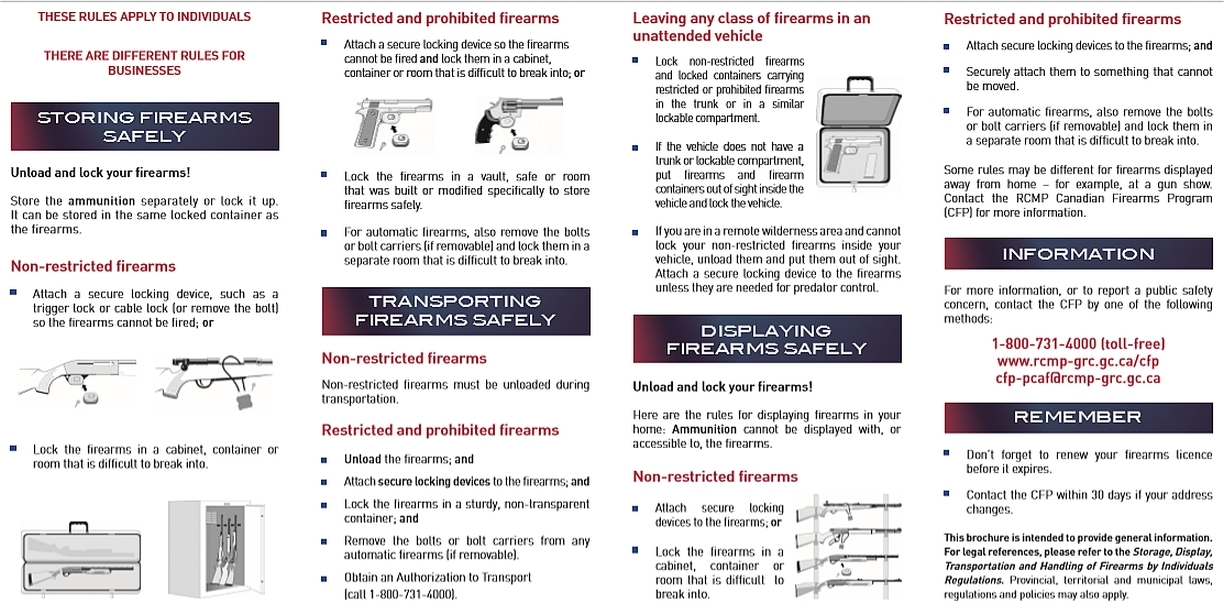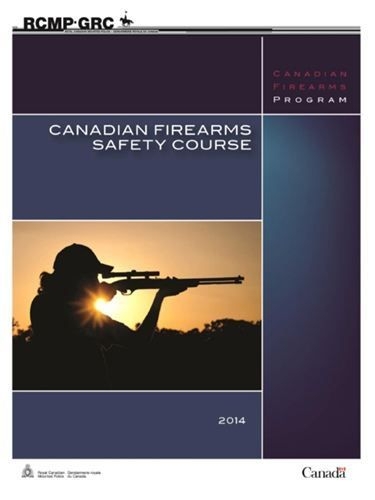Come prepared
- Read the manual before attending the course;
- Learn the acronym ACTS and PROVE;
- Learn the basics of Safe Storage, Transportation and Display of firearms;
- Arrive on time (come 15 minutes early to complete paperwork); Note: Due to the nature of the course and the mandatory attendance for the full course hours, late arrivals are not permitted.
- Bring proper Government Identification;
- Bring a lunch and some snacks;
- Bring a pen for filing out paperwork and writing the written exam; and
- If you are below 18 years of age, don’t forget to bring a completed parental consent form.
Don’t stress
Your course is designed to provide you with all the information and training you need to pass the written and practical exams, no matter your experience level.
Reading the manual is expected before you attend the course, and it will ensure you get the most out of the course.
CFSC COURSE VIDEO
In addition to the manual, the following 44-minute-long video is complimentary resource that provides an overview of some of the material that you will learn during the Canadian Firearms Safety Course CFSC:
A.C.T.S. and P.R.O.V.E.
The ACTS and PROVE acronyms are used throughout the Canadian Firearms Safety Course and the Canadian Restricted firearm safety course and form the core of the safe handling portion of the course. Learning the wording of the acronym before attending the course is a great way to get a head start on the course.
You must perform ACTS and PROVE every time you pick-up or put-down a firearm, every time you hand a firearm to a person, every time you receive a firearm from a person, every time you clean a firearm, every time you secure your firearm for storage, transportation, or display, etc.
You will be taught how to physically perform the ACTS and PROVE procedures in class. However, learning the words of the acronym before class will put you at an advantage:
Assume every firearm is always loaded
Control the muzzle direction at all times
Trigger finger must be kept off the trigger and out of the trigger guard
See that the firearm is unloaded – PROVE it safe
Point the firearm in the safest available direction
Remove all ammunition
Observe the Chamber
Verify the feedpath
Examine the bore
Watch a short demonstration of P.R.O.V.E.:
PROVE – Non-Restricted Firearms
Knowing the wording for the ACTS and PROVE acronyms (above) before class will put you at an advantage. However, it is preferable for you to learn the physical PROVE procedures in class with the actual firearms in your hands rather than by reading or watching the videos below. These videos are only here to provide a little insight before your course.
You will have the PROVE procedures physically demonstrated to you in class and there is plenty of time dedicated to providing you with opportunity to practice – no matter your experience level. However, the following Silvercore short videos are here because they do an excellent job of introducing the physical process of PROVEing that a Non-Restricted firearm is unloaded:
PROVE – Lever Action
PROVE – Break Action
PROVE – Semi-Automatic Action
PROVE – Bolt Action
PROVE – Restricted firearms (handguns)
You will have the PROVE procedures physically demonstrated to you in class and there is plenty of time dedicated to providing you with opportunity to practice – no matter your experience level. However, the following Silvercore short videos are here because they do an excellent job of introducing the physical process of PROVEing that a Restricted firearm is unloaded:
PROVE – Single Action Revolver
PROVE – Double-Action Revolver
PROVE – Semi-Automatic Action
SAFE STORAGE, TRANSPORTATION, AND DISPLAY OF FIREARMS
A lot of emphasis is placed on the safe storage, display, and transportation of firearms and ammunition during the Canadian Firearms Safety Course and the Canadian Restricted Firearms Safety Course.
The best way of preventing the misuse of firearms is by making sure that firearms are unloaded (by doing P.R.O.V.E) and that they are not accessible to unauthorized individuals, nor to the ammunition that can be fired in it. The CFSC and CRFSC courses provide students with the minimum legal requirements for safe storage, display, and transportation of firearms. Methods of going above and beyond the legal minimum requirements are also demonstrated and encouraged. The following RCMP published .PDF document is a brochure outlining the safe storage, display and transportation of firearms:

NOTE: Students must be able to attend the full course hours. Also, the CFSC is a prerequisite for the CRFSC so students must pass the CFSC portion of the course before attending the CRFSC portion of the course.

